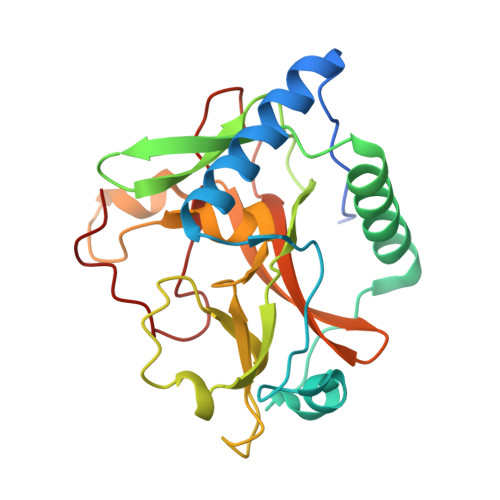Molecular basis for the methylation specificity of ATXR5 for histone H3.
Bergamin, E., Sarvan, S., Malette, J., Eram, M.S., Yeung, S., Mongeon, V., Joshi, M., Brunzelle, J.S., Michaels, S.D., Blais, A., Vedadi, M., Couture, J.F.(2017) Nucleic Acids Res 45: 6375-6387
- PubMed: 28383693
- DOI: https://doi.org/10.1093/nar/gkx224
- Primary Citation of Related Structures:
5VA6, 5VAB, 5VAC, 5VAH, 5VBC - PubMed Abstract:
In plants, the histone H3.1 lysine 27 (H3K27) mono-methyltransferases ARABIDOPSIS TRITHORAX RELATED PROTEIN 5 and 6 (ATXR5/6) regulate heterochromatic DNA replication and genome stability. Our initial studies showed that ATXR5/6 discriminate between histone H3 variants and preferentially methylate K27 on H3.1. In this study, we report three regulatory mechanisms contributing to the specificity of ATXR5/6. First, we show that ATXR5 preferentially methylates the R/F-K*-S/C-G/A-P/C motif with striking preference for hydrophobic and aromatic residues in positions flanking this core of five amino acids. Second, we demonstrate that post-transcriptional modifications of residues neighboring K27 that are typically associated with actively transcribed chromatin are detrimental to ATXR5 activity. Third, we show that ATXR5 PHD domain employs a narrow binding pocket to selectively recognize unmethylated K4 of histone H3. Finally, we demonstrate that deletion or mutation of the PHD domain reduces the catalytic efficiency (kcat/Km of AdoMet) of ATXR5 up to 58-fold, highlighting the multifunctional nature of ATXR5 PHD domain. Overall, our results suggest that several molecular determinants regulate ATXR5/6 methyltransferase activity and epigenetic inheritance of H3.1 K27me1 mark in plants.
- Ottawa Institute of Systems Biology, Department of Biochemistry, Microbiology and Immunology, University of Ottawa, 451 Smyth Road, Ottawa, Ontario K1H 8M5, Canada.
Organizational Affiliation:



















